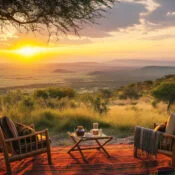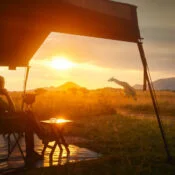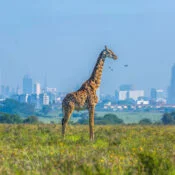
Exploring the Majestic Maasai Mara
Kenya vs Tanzania: Which Country Offers the Best Safari?
If you’re dreaming of an African safari, chances are Kenya and Tanzania are at the top of your list. These two neighboring countries in East Africa are home to some of the most famous wildlife experiences on the planet — but which one is better?
Let’s break it down and help you decide which destination fits your travel style, budget, and expectations.
🦓 Wildlife – Who Wins?
Both countries offer amazing wildlife — think lions, elephants, giraffes, rhinos, hippos, and even the rare leopard if you’re lucky. But they each have their own highlights.
- Kenya is famous for the Masai Mara, where you can easily spot the Big Five and see huge lion prides. It’s also great for spotting wildlife all year round.
- Tanzania is home to the Serengeti, which is bigger and wilder, with fewer safari vehicles and more untouched land.
✅ If you want guaranteed animal sightings and shorter drives – Kenya wins.
✅ If you love wide open spaces and fewer crowds – Tanzania takes it.
🐃 The Great Migration – Where’s the Best View?
Both countries share the legendary wildebeest migration, where over a million animals move between the Serengeti and the Masai Mara.
- July to October: The migration is mostly in Kenya (Masai Mara). That’s when you can witness the dramatic river crossings — crocodiles and all.
- January to March: The herds are back in Tanzania for calving season in the Serengeti. This is when thousands of baby wildebeest are born — and predators follow.
✅ For dramatic river crossings – go to Kenya.
✅ For baby animals and fewer tourists – choose Tanzania.
🏕️ Safari Style – Lodges, Camps, and Comfort
- Kenya has a wider range of safari options — from budget camps to ultra-luxury lodges. It’s more developed for tourism and easier for first-time safari-goers.
- Tanzania tends to focus on mid-range to luxury safaris, with more tented camps inside the national parks.
✅ If you’re on a budget or want lots of choices – Kenya might suit you more.
✅ If you want a quieter, more remote feel – Tanzania is your place.
🛫 Accessibility – Which Is Easier to Reach?
- Nairobi (Kenya) is a major hub with many international flights and shorter travel times to parks like Masai Mara and Amboseli.
- Tanzania is a bit more spread out. Most safaris start from Arusha (near Kilimanjaro Airport), and drives between parks can be longer.
✅ Kenya wins for easier access and faster connections.
✅ Tanzania may involve more travel — but the journey is worth it.
🏖️ What About the Beach?
- Kenya’s coast (Mombasa, Diani, Watamu) is beautiful and easy to reach after a safari.
- Tanzania has Zanzibar, a dream island with white-sand beaches, turquoise water, and rich Swahili culture.
✅ If you want a classic beach break after safari – both are great.
✅ But Zanzibar is more exotic and romantic.
🌍 So, Which Is Better?
Honestly? There’s no wrong choice.
Both Kenya and Tanzania offer incredible safaris, warm people, amazing wildlife, and life-changing experiences. It just depends on what you want:
| Choose Kenya if you want. | Choose Tanzania if you want. |
| Shorter travel time | Wilder, less touristy parks |
| Big Five sightings year-round | Baby animals & calving season |
| A wider range of budgets | A more remote, exclusive feel |
| Classic Masai Mara safari | The full Serengeti experience |
💬 Final Thoughts
If you can, do both countries in one trip — many travelers combine Kenya and Tanzania safaris easily. But even if you choose just one, you’re guaranteed an unforgettable adventure.
Whichever you pick, East Africa is waiting with wide skies, wild animals, and that special kind of peace you only find in nature.
🧭 Plan Your Safari with Us
At Holidawn Adventures Tours & Travels, we’ve helped travelers from around the world experience the best of Kenya, Tanzania, Uganda, and Rwanda — from bucket-list safaris to hidden gems off the beaten path.
We’ll help you design a trip that fits your travel style, interests, and budget — whether you’re after luxury lodges, cultural immersion, or wildlife-packed game drives.
📞 Call or WhatsApp us: +254 112 545 853
📧 Email: info@holidawnadventures.com
🌐 Let’s turn your dream safari into reality.z
All Categories
Recent Posts
Kenya Family Safari Guide: Costs, Tips & Best Experiences
Top 10 Luxury Safari Lodges in Kenya
Best National Parks in Kenya for Safaris
Quick booking process
+254112545853
+254722910255


